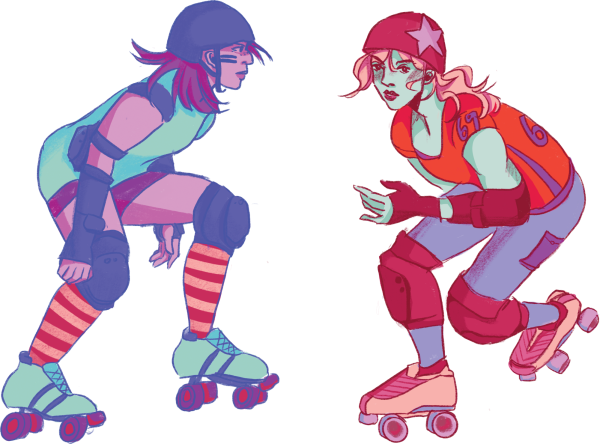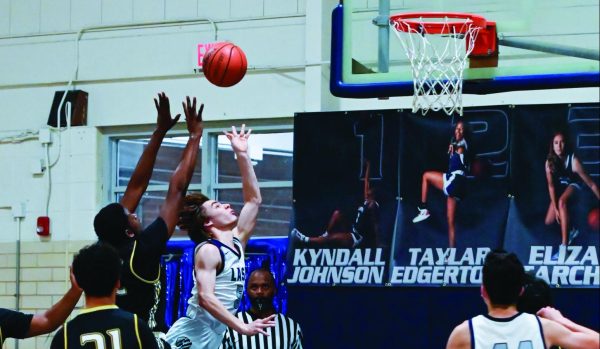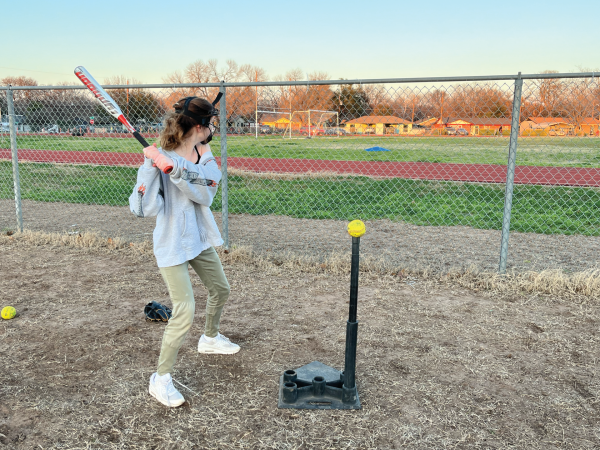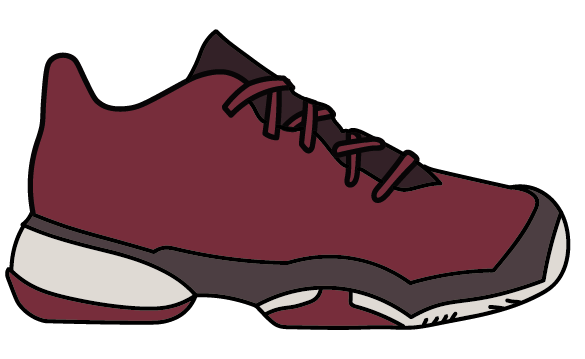Water Polo Newbie Tries To Stay Afloat In The Deep End
January 15, 2020
I opened the front door of the Lee and Joe Jamail Texas Swimming Center, went down several flights of stairs and looked inside the natatorium. A swimmer’s paradise awaited me, complete with two pristine pools with all the amenities a swimmer could ever need. LED clocks displayed timers in bold, red letters, giant fans spun overhead, championship banners lined the edges of the ceiling and a large video board displayed the Longhorn logo of the University of Texas. To the people I saw swimming there, these were mundane, normal features of the facility they worked out in daily. But to me, the swim center was a palace dedicated to completely foreign sports, and I was slightly intimidated.
I changed into my swimsuit and hopped into the water as the other players began swimming freestyle across the pool. Since it had been about three months since I last swam, I got tired quickly. I realized that to all the other players, swimming was the basis of their water polo skills and came as naturally to them as a warm-up lap around a track would feel to me. I lacked this basis; just the simple act of swimming was fairly tiring for me, and I knew that this wouldn’t bode well for my water polo performance. The players around me would swim at the same pace as me, if not faster, and then move on without a break between laps while I had to grab onto the side of the pool and catch my breath for a couple of seconds every few laps.
After about ten more minutes of this, the group began practicing the eggbeater method of treading water. When the instructor yelled out, “Eggbeater across the pool, nice and easy!” I was completely confused so I asked him how to do this water polo maneuver. Someone told me that it was essentially a more exaggerated breaststroke kick but with alternating legs. I learned that the motion is crucial if one wants to become a master water polo player; normal water-treading uses too much energy, and that is detrimental in a sport that requires you to constantly stay above water all the while throwing, catching and swimming with a ball. I tried the eggbeater with limited success. Every other player seemed to be exerting less effort and moving faster as they trod forward. We practiced this for a little longer and eventually a variation was added: we had to do a “jumping jack” at each landline. It wasn’t really a jump since the ground was too far down to touch. I continued to struggle at the eggbeater and added in a pitifully low “jump” every once in a while as I slowly went back and forth across the pool. After swimming a few lengths, I heard the coach announce our next task, which finally involved the ball.
The team divided into groups of three and we started practicing passes. This would have been fairly easy if my legs were fresh, but because of my limited swimming endurance, I was already tired out from the earlier swimming and treading by the time the passing practice started. In my weak state, staying high enough above the water to complete a pass and propel myself out of the water to catch high passes were way harder than they should have been. I eventually got a cramp in my foot, so I left the pool, took a drink from one of the water fountains outside the giant room and came back in. By that time, it was time for shooting practice.
Shooting practice was less challenging. It didn’t involve any catching, but we still had to get ourselves high enough out of the water to bullet the ball toward the goal and past the long-armed goalkeeper, junior Patrick Haney, who was easily able to save the slower, more lob-like shots. I fired a couple of shots, one of them embarrassingly sailing above the crossbar.
From just reading the definition of water polo, the sport seems easy to play. Simply toss the ball around to your teammates and try to score a goal. The thing is, it probably really is that easy for some people, but those people usually have a strong swimming background, something I do not possess. You have to walk before you can run, and you definitely have to swim before you can play water polo.










